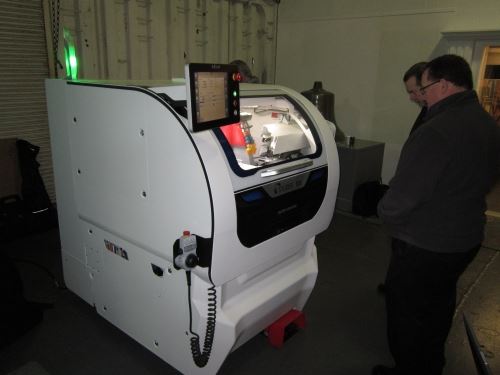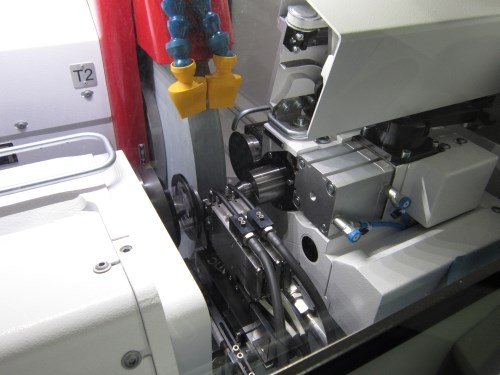Compact Cylindrical Grinding Machine for High Production
United Grinding recently introduced its Studer S11 small-parts production grinding machine to the North American market. An online video demonstrates an interesting cam-actuated loading system that’s available with the machine.
Share




The cam-actuated system shown in this video is one alternative for automated workpiece installation/removal on the new S11 cylindrical grinding machine. Note the in-process gaging capability being demonstrated, too.
United Grinding now offers its high-production Studer S11 cylindrical grinding machine for small parts. The S11 was not developed to be a universal-type grinding machine. Instead, it was specifically designed for automated, high-volume production of small, precision parts as long as 7.87 inches. The machine weights approximately 5,000 pounds and features a Granitan mineral-casting bed that offers good vibration damping qualities. It accommodates a 19.7-inch-diameter (500 mm) wheel and is available with the wheelhead plunge angle set at 0 or 20 degrees. It can also be set up to perform high-speed peel-grinding operations. Like other Studer cylindrical grinding machine designs, the X and Z axes are part of a self-contained cross-slide unit. Both axes have linear guideways mounted on roller bearings.
The S11 features a streamlined designed without unneeded options and uses no hydraulics. Instead, component actuation is performed electrically or pneumatically. Compact size with a floorspace area just over 19.4 square feet is combined with easy access for maintenance and setup. The main door offers three opening stages. Stage one opens upwards minimally and is intended for quick manual loading or a brief check of the workpiece. For stage two, the door opens a bit more so all table-mounted accessories are accessible from the top. Stage three enables a lower front panel to be dropped down to make the front fully accessible during set ups.
The machine is available in a range of automation configurations, and users should consult with UG representatives to determine the configuration that’s best-suited for their application. One is shown in the video above, in which a simple but effective cam system is used to remove and install workpieces from the chuck. StuderWinFocus software was developed for this machine to enable pictogram step-by-step programming, and the Siemens Sinumeric 840D SL control with touchscreen interface has a tablet look to it.
Related Content
-
Investing in Automation, Five-Axis to Increase Production Capacity
To meet an increase in demand, this shop invested heavily in automation solutions and five-axis machines to ramp up its production capabilities.
-
4 Steps to a Cobot Culture: How Thyssenkrupp Bilstein Has Answered Staffing Shortages With Economical Automation
Safe, economical automation using collaborative robots can transform a manufacturing facility and overcome staffing shortfalls, but it takes additional investment and a systemized approach to automation in order to realize this change.
-
CNC Machine Shop Honored for Automation, Machine Monitoring
From cobots to machine monitoring, this Top Shop honoree shows that machining technology is about more than the machine tool.





















.jpg;maxWidth=300;quality=90)


